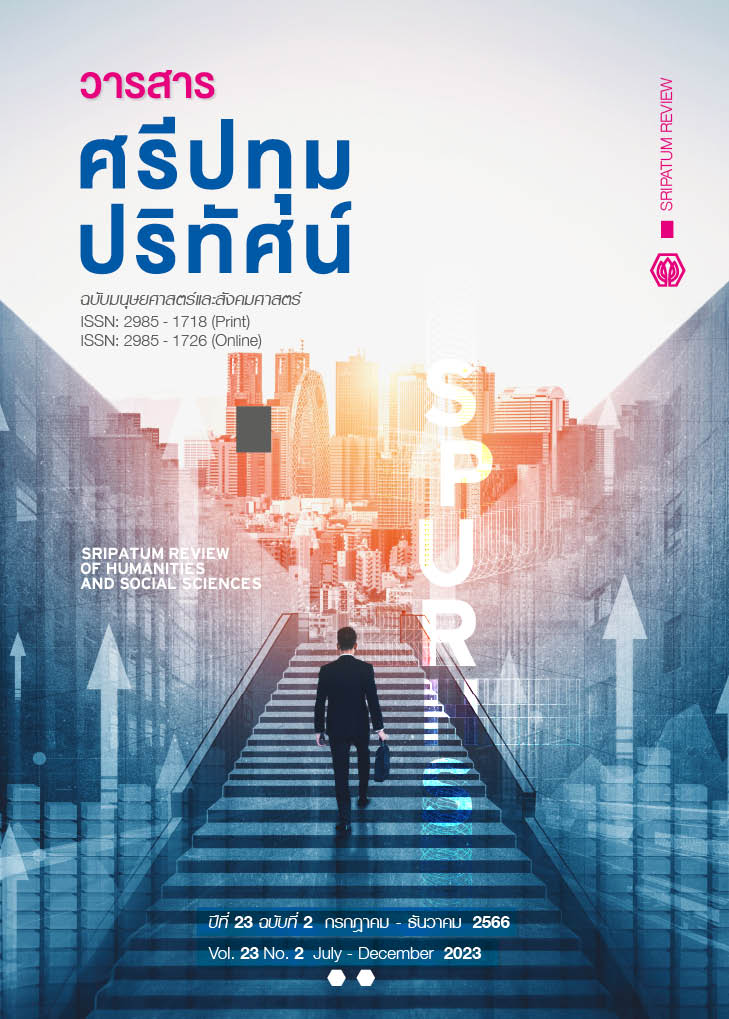The Study and Analysis; Limitations, Problems, and Obstacles of Killing Fungus in Sweet Tamarind before The Application of Radio Frequency Technology and Low-Temperature Plasma Technology
Main Article Content
Abstract
The objectives of this research were to study and analysis about the limitations, problems, and obstacles of killing fungus in sweet tamarind before applying radio frequency technology combined with low temperature plasma technology at the field levels and to present guidelines for preventing and reducing conflicts from the use of technology based on the concept of Collaborative management. This study was a qualitative research methodology. Data collection methods were used: (1) Focus Group, (2) In-depth Interview, and (3) Participant observation. The group of key informants was purposively selected, which was divided into four groups of tamarind farmers in Phetchabun Province: (1) Lom-Kao District 64 people, (2) Lom-Sak District 30 people, (3) Mueang District 22 people, and (4) Chon Daen District 7 people. Total of key informants were 123 people. Data were examined by the triangulation method and analyzed the data by content analysis.
The research results were found that limitations, problems, and obstacles of killing fungi in sweet tamarind before application of the technology has 3 stages: (1) Before fruiting stage, (2) During fruiting stage, and (3) After fruiting stage. These influences upgrading the development of fungicide systems in tamarind in 3 issues: (1) Economic; Cost of soaking tamarind in cold storage, (2) Environment; Burning moldy tamarind peels, and (3) Society and culture; Stroking a moldy tamarind and the belief that white mold and brown mold can be eaten.
Article Details

This work is licensed under a Creative Commons Attribution-NonCommercial-NoDerivatives 4.0 International License.
1. กองบรรณาธิการสงวนสิทธิ์ในการพิจารณาและตัดสินการตีพิมพ์บทความในวารสาร
2. บทความทุกเรื่องจะได้รับการตรวจสอบทางวิชาการโดยผู้ทรงคุณวุฒิ แต่ข้อความและเนื้อหาในบทความที่ตีพิมพ์เป็นความรับผิดชอบของผู้เขียนแต่เพียงผู้เดียว มิใช่ความคิดเห็นและความรับผิดชอบของมหาวิทยาลัยศรีปทุม
3. การคัดลอกอ้างอิงต้องดำเนินการตามการปฏิบัติในหมู่นักวิชาการโดยทั่วไป และสอดคล้องกับกฎหมายที่เกี่ยวข้อง
References
Berkes, F., George, P., and Preston, R. J. (1991). Co-management: The evolution in theory and practice of the joint administration of living resources. Alternatives, 18(2), 12-18.
Bolanos, R., and Antonieta, M. (2014). The role of community-based tourism in sustainable rural development: Case studies from ecuador (Doctorat en Sostenibiltat). Barcelona: Universitat Politecnica de Catalunya.
Linden, R. (2002). A Framework of Collaborating. The Public Manager, 31(2), 3-6.
Liu, Y., Tang, J., Mao, Z., Mah, J. H., Jiao, S. and Wang, S. (2011). Quality and mold control of enriched white bread by combined radio frequency and hot air treatment. Journal of Food Engineering, 104(4), 492-498.
Jentoft, S., McCay, B. J. and Wilson, D. C. (1998). The fisheries co-management experience accomplishments, challenges and prospects. (Online). Retrieved March 20, 2019, from https://books.google.co.th/books?id
Maxwell, J. A. (1996). Qualitative Research Design: An Interactive Approach. Thousand Oak, CA: Sage.
Miles, M. B. and Huberman, A. M. (1994). Qualitative data analysis. 2nd ed. Thousand Oaks, CA: Sage.
Montong, C., Prachaiyo, O., Suwansri, S., Thanasukarn, P. and Ratanatriwong, P. (2018). Efficiency of radio frequency technology in mold inactivation in ready to eat peeled sweet Tamarind (Tamarind indica L.). Agricultural Science Journal 49, 1(Suppl.), 552-556. (in Thai.)
Nelson, F. and Agrawal, A. (2008). Patronage or participation? Community-based natural resource management reform in sub-saharan Africa. Development and Change, 39(4), 557-585.
Pachanatong, M. (2020). Quality improvement of sweet tamarind using house heating for Community Enterprise (Doctoral dissertation). Bangkok: Intellectual Repository at Rajamangala University of Technology Phra Nakhon.
Poonwan, N., Chotika, B., Pusuwan, S. and Boriraj, V. (1988). Fungi and their toxins present on Sweet Tamarind. Bulletin of the Department of Medical Sciences, 30(1), 3-8. (in Thai.)
Sanamchaisakul, C. (2002). A study of relationship between Fungi on sweet tamarind pods affect physical characteristics and quality, causes and occurrence of fungus prevention and control by farmers (Research report). Phetchabun: Phetchabun Rajabhat Institute. (in Thai.)
Thavornvatanayong, C., Kutintara, U. and Sunthornhao, P. (2017). Partnership and bottom-up concept application for community forest management at the Sapanhin sub-district, NongMamong district, Chainat province. SDU Research Journal Science and Technology, 13(1), 39-53. (in Thai.)


